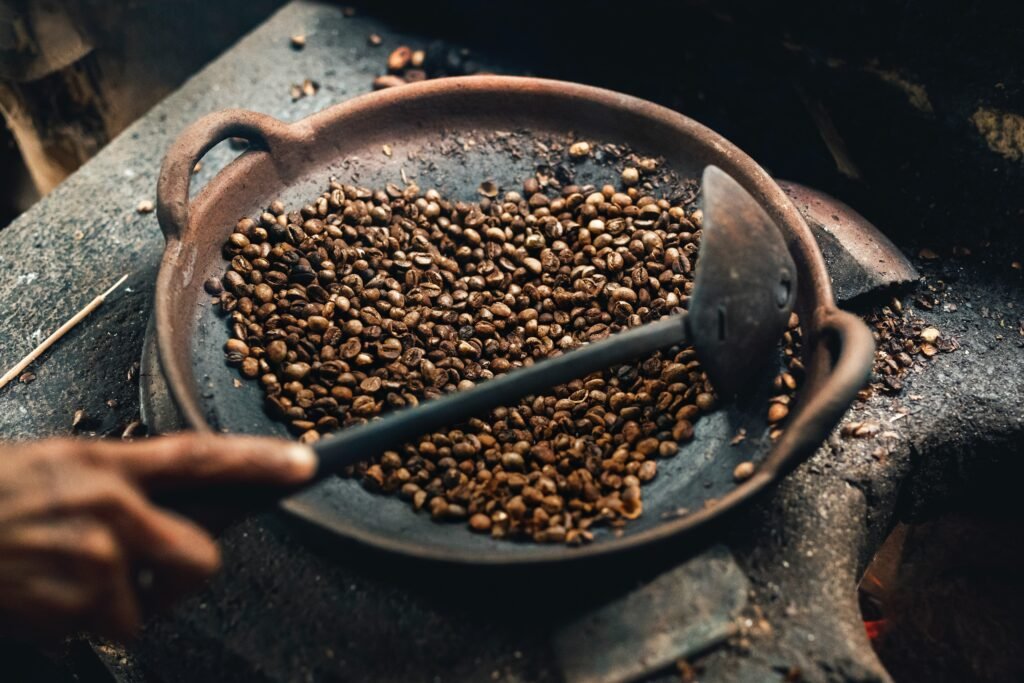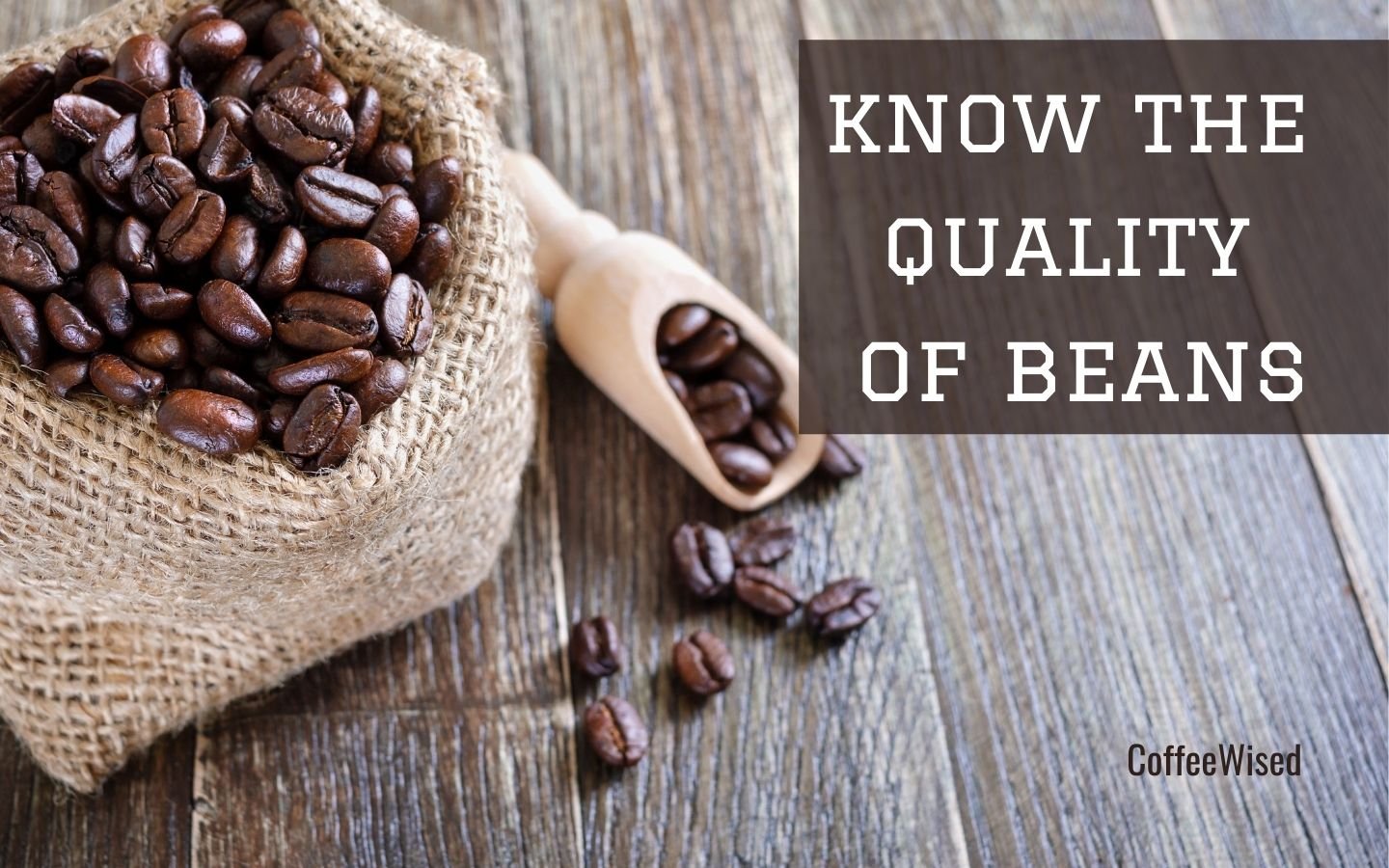Quality of Beans: Know the Expert Tips for Joe
Delicious and rich coffee comes from good quality beans, period.
Bad beans yield bad coffee. But how do you know if the beans in your cart or coffee cabinet are of good quality? We cannot open the bag of beans every time to distinguish bad guys from good guys. But there are tricks to save your money and time.
We have many factors to determine the quality of beans, so without further ado, let’s jump into the tricks.
The Date of Roasting
The flavor of coffee comes from the process of roasting. Coffee beans are picked in raw and green form. The green raw beans have the flavors wrapped inside them. Roasting brings out the flavors of coffee beans as caramel, chocolate, fruit, flower, etc.
When raw beans are exposed to heat, they undergo many chemical reactions between amino acids, minerals, carbohydrates, lipids, caffeine and water. If they are exposed to too low or too high heat, the difference in chemical reactions can alter the flavor and aroma of beans.

Maintaining the freshness of roasted beans is also necessary. Roasted coffee beans are very delicate and susceptible to aging.
Here is how you can solve the mystery of roasting.
- Check for the “exact roasting date” instead of “best by” date. Look for closest roasting date from today.
- If you are buying coffee beans from open-house shelf, then check for the look and feel of beans. The beans should look glossy. Hold in your hand, rub a little and put it aside. There should be some bean residue on your hand.
- Freshly roasted coffee beans degas releasing carbon dioxide. After some time, degassing becomes slow to almost zero. Manufacturers put a valve in coffee bags to allow carbon dioxide to release. If the coffee bag does not have the valve, then the beans are not freshly roasted.
- Using the degassing technique, you can check the quality of beans at home also. If you have bought beans from open-house shelf, then put beans in a resealable bag. Take out all air before sealing the bag. Leave the beans at kitchen counter overnight. If the bag puffs up by morning, then it means the beans are fresh and still degassing.
Packaging of Beans
Some beans are packed in cans and boxes while others are packed in bags. Tins, cans and packaging techniques other than bags are not very trustworthy because these are used to lengthen the age of beans.

- Look for beans stored in bags only.
- Check the valve. The bag should have one-sided valve to allow carbon dioxide from degassing process to release. One-sided valve does not allow oxygen to enter the bag, which helps maintain the freshness of beans till last spoon.
Types of Coffee Beans
There are two types of beans, arabica and robusta. Most of the commercial coffee producers use robusta beans because they are less expensive and mass produced all around the world. Robusta beans have a bitter and harsh taste. The bean itself has a rubbery and grainy texture.
Arabica beans are expensive because arabica coffee plant requires special handling and environment to grow. These beans are grown at higher elevation, between 600-2000 meters. This free guide explains the difference between arabica and robusta beans in detail.
Arabica beans have chocolaty, sweet and nutty flavor with hints of fruit and berries.
- For best flavor, always choose arabica beans over robusta.
- Some manufacturers mix arabica and robusta beans to cut down the cost of production. Make sure that the beans you pick are 100% arabica.
Is Starbucks Coffee Robusta or Arabica? – Starbucks Quality of Beans
Starbucks Premium Instant Coffee is made from 100% arabica beans. According to Starbucks, all beans are sourced from Latin America.
Place of Origin
You will see terms like “high quality beans” and “best quality beans” on almost all bean bags. However, the origin defines the type of coffee beans. Arabica beans were started in Ethiopia. Now they are produced in different parts of the world, including Latin America, Indonesia, Brazil, and some parts of Africa.
Arabica beans are produced at tropical highlands. If the stated origin of beans is somewhere in tropical area and elevated land, then those are most probably Arabica beans. Robusta beans are mostly produced in Africa.
If the roaster has mentioned the type of roast, country of origin, and farmer’s name also, then high chances are that these are high quality beans.
Trade Classification for Quality of Beans
Packaged coffee is sold after commercial grading of beans. This classification is based on defect count and screen size to give you a general idea about the quality of cup it will yield.
Beans are classified with SCAA Green Coffee Classification Method and Brazilian/New York Green Coffee Classification Method. Read more about the classification methods here.
- In SCAA Green Coffee Classification Method, look for Specialty Grade Green Coffee or Premium Coffee grade.
- In Brazil/New York Green Coffee Classification Method, look for Specialty Green Coffee Beans.
How to Know the Quality of Beans from Taste?
Good quality beans do not taste raw or bitter, and do not have off-taste. When you take a sip of coffee, it should have rich, sweet, and balanced acidic and bitter flavor. The aftertaste should be similar to the taste of coffee in first sip.
You can check the exact taste of beans by doing coffee tasting at home. Brew a cup of coffee using the correct grind size and roast type for your equipment. Then take a sip of coffee and let it stay in your mouth for a few seconds. Move around your tongue and then drink it. Wait for 5 minutes to check aftertaste of coffee.
If it tastes fresh ad rich, and acidity and bitterness and balanced, the beans are of good quality.
Where Do You Find Good Quality Beans?
Finding good quality beans could be a challenge. If you do not want to compromise on the taste of your everyday coffee, then here are a few suggestions to start your hunt of good quality beans.
Local Roastery
If you live in a country that produces own coffee, then you must have local roasteries. Even if your city does not grow coffee, there must be roasteries that bring beans from other cities.
To find local and nearest roasteries, go to Google Maps and search “coffee roastery”. Shortlist the nearest roasteries to visit.
- On your visit, check that the roastery follows ideal hygiene conditions.
- Make sure that the roasting machines are cleaned after each batch of coffee beans.
- Check if the beans are instantly packaged after roasting to maintain freshness.
Internet Listings
You can buy good quality coffee beans from internet listings. Facebook Marketplace is a good place to start your search. You can also join local community groups to find recommended roasteries in your country.
Another option is to search the keywords on platforms like LinkedIn and Instagram. On LinkedIn, you can find many registered coffee businesses. Filter your search on Instagram to find nearest local roasteries.
Many sure to check the reviews online or at least look for recommendations before buying.
Buy Online from Small Roastery or Coffee Farm
On platforms like Amazon, you can find many roasteries or coffee businesses to buy good quality beans. Check for small roasteries or coffee farms to get fresh coffee beans. Check the reviews and ratings before making a decision.
If you are concerned about the freshness of beans then you can buy raw green beans, and roast them before using them. This process is time consuming, but the cup of coffee you will get has no match.
